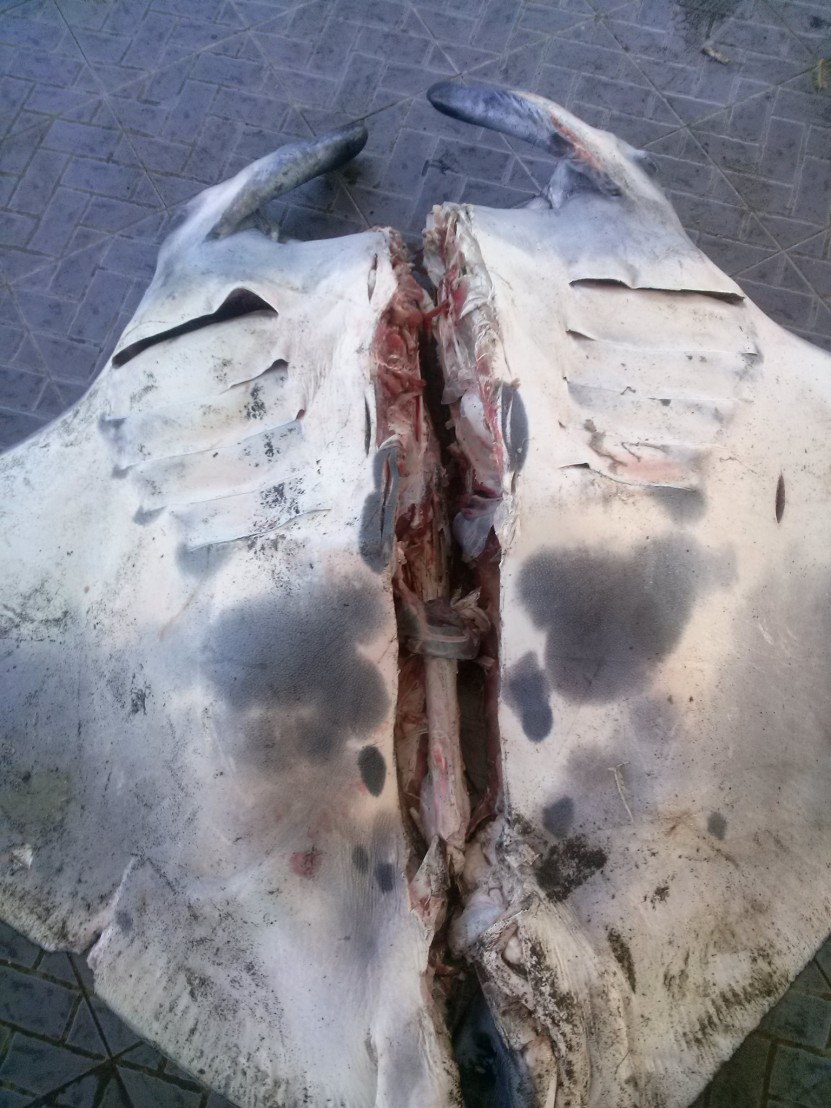Post Ramadan

We’ve never witnessed a shark/manta auction before. It was depressing. Threshers, black tips, white tips, tigers, blues, all kinds. And then there was the Manta alfredi, or Reef manta, that was in two halves. As far as we thought, most of the manta catch in Tanjung Luar was Giant mantas, or Manta birostris; now we have confirmation that they are pulling in Manta alfredi as well. We sent the alfredi photo accompanying this update to all the regional organisations we know of who have local manta databases. Of course, nobody wanted it to be one from their database, but nobody wanted this manta to die in vain either. Earlier in the year, we already verified the connectivity between the Nusa Penida and Komodo populations, but I think it is safe to say everyone wanted this one manta to provide definitive proof that the mass culling of both manta species was depleting populations from protected areas where manta tourism pumps a tremendous amount of income into the local economies. There was no match.
Later in the morning, the sale of the shark carcasses was barked out over a blown-out handheld megaphone. There was no real need for the drama of the megaphone as it was only four people bidding and they were the same cast of characters as we usually see there. The Manta alfredi sale took place in a very hushed corner between two bidders.
At the apex of the management structure of Tanjung Luar are two elders, or “Hajis”. Both are from Sulawesi and they make no bones about their intense rivalry; however, they will work in unison when their profits are threatened. Each Haji owns a local shark/ray processing plant just outside Tanjung Luar village where the shark fins and manta gill rakers are dried and subsequently transported by truck across Lombok to a ferry for Bali, then across to another ferry bound for Java. Then on to Surabaya for export further afield to China.
Most of the shark/ray boats are from Maringki, a small island occupying the same bay as Tanjung Luar.
The fishing methodology is primarily net, spear, trolling, gill nets, long-line, and purse seining.
We have photographic evidence that boats bring in dolphins, we reestablish this fact every time we go to TL, but several whales have been reported in the market as well.
The reach of their fishing is pretty vast: Teluk Ekas, Kuta (southern Lombok), Pulau Panjang, Teluk Blongas (southern Lombok), Alas Strait, Lombok Strait, Luyuk (southern Sumbawa), Pesing, Teluk Campi (southern Sumbawa), Sumbawa Island, Savu Sea, Pulau Island, Pulau Rote, Kupang (NTT waters), Timor Sea (NTT waters), Flores Sea, South Sulawesi, Bulukumba, Builders Iron, Batuata, Java Sea, and they often cross the international marine border into Australia.
If the crew gets detained in Australia they are put in jail where they’ll earn a few dollars a day, and eventually get to fly in a jet plane home; something few of their friends have done. Their families are taken care of by the boat owners who are slapped with a minimal (described to us a "laughable") fine to get their boats out of inpoundment. Based on this information, there is no real impetus preventing the boats from “straying” into Australian waters.
We always notice several piles of baby, juvenile, and smaller shark species whenever we go the Tanjung Luar. It turns out that the men who unload the sharks and rays from the larger boats and walk the carcasses through the rancid and polluted bay water to the market are paid in barter with these lower value sharks.
Another very interesting bit of info, which answers a lot of questions, is that evidently the Indonesian government has a difficult time sending people to enforce laws at the fishery as most fisheries personnel are ctually afraid to go to Tanjung Luar.
One thing for sure, Tanjung Luar seems like a living organism or bacteria, and the more we uncover the more complicated and dark the place seems to get.
NEWS FLASH…as we’re finishing this update, we received a link to an article detailing that the Australian government just destroyed three boats from Indonesia that were seized while illegally fishing in Australian waters. Our team strongly suspects they are from Tanjung Luar and will verify this in the next few days.



